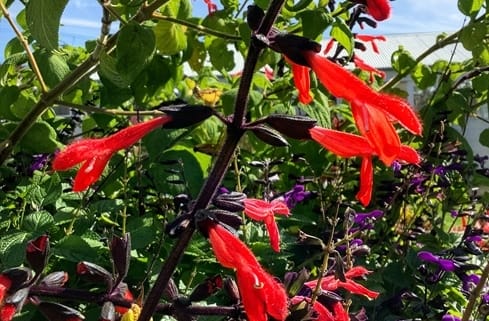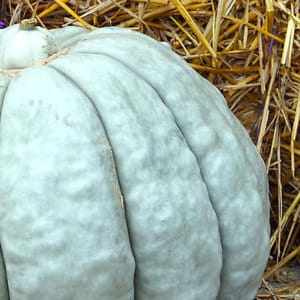Sage advice on salvias
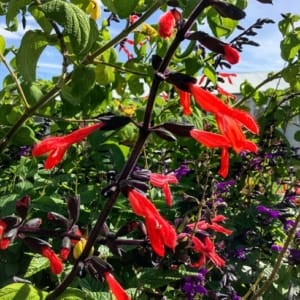 by Mark Evans
by Mark Evans
The genus Salvia is the largest in the mint family (Lamiaceae) and among the biggest in the entire plant kingdom – currently ranked twenty-fifth – with 1,024 recognised species and many more cultivars and hybrids.
The type species, Salvia officinalis (common sage), serves as the genus’s botanical anchor, defining the key traits shared by all other salvia species. Common sage has a rich history in traditional medicine. The Egyptians valued its healing properties, and Roman author, Pliny the Elder, first used the name salvia in 77 AD, derived from the Latin salvere, meaning ‘to heal’ or ‘to be saved’. The species name, officinalis, refers to the officina, the storeroom in a monastery where medicinal herbs were kept and is often used in plant names to indicate those of a culinary or medicinal importance.
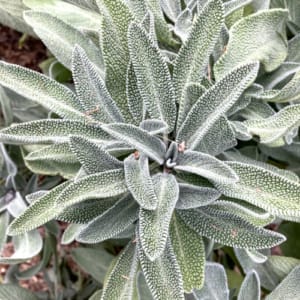
Salvia officinalis
All salvia flowers are highly attractive to pollinators. Their tubular shape suits bees, butterflies and honeyeaters perfectly. A unique feature across the genus is a specialised pollination mechanism: the flower’s stamen is hinged, working like a lever. When a pollinator enters for nectar, it triggers the lever, depositing pollen onto the visitor that is then carried to the next flower’s stigma – ensuring efficient reproduction.
With such vast diversity, there’s a salvia for nearly every garden style and climate. They range from compact groundcovers to large shrubs, and flower colours span nearly every shade, including brilliant blues, fiery reds, soft pinks, purples, whites, yellows, and even rare tones like black and brown. Some are bold and vibrant, others subtle and pastel. As an extra bonus, many salvias have a coloured calyx or flower tube so that even when the flower petals drop off, a coloured stem remains for many months.
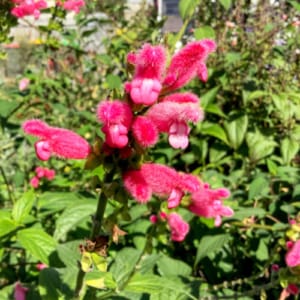
Salvia oxyphora
In addition to their beauty and ecological value, many salvia species are hardy, low-maintenance and drought-tolerant – making them a favourite among gardeners and pollinators alike.
For more in-depth information, one of the most comprehensive resources is the Victorian Salvia Study Group that is available online.
Meanwhile, around the town gardens, the tibouchinas are the stars of the show this time of year. Every garden should have one – they come in a range of sizes to suit almost any space.
Now’s also the perfect time to plan for a splash of winter colour. Plant out a few punnets of cool-weather-loving annuals such as pansies, violas, primulas or polyanthus to brighten up the colder months.
In the wild, along roadsides around the Triangle, keep an eye out for yellow dots appearing at shrub height. That’s Acacia terminalis (sunshine wattle) beginning to bloom. Growing to around two metres tall, with dark green, finely divided leaves, it’s one of the few wattles to flower during the colder months.
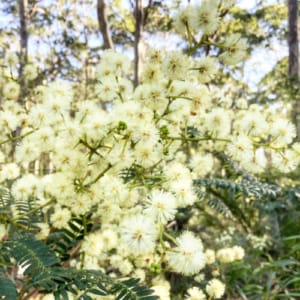
Acacia terminalis
In the vegie garden, the first peas and snow peas should be coming on. To keep your crop going, follow up with another planting. If you love broad beans – or want to give them a go – now’s the ideal time to sow seeds. Lettuce can go in too (unless last season’s seeds are already popping up) and it’s also a great month to plant alliums such as onions, garlic, leeks and eschalots.
Finally, if you have any comments, gardening questions, or need help identifying a plant or pest, feel free to get in touch at gardening@thetriangle.org.au – we’re happy to help.
Happy growing!
Top photo: Salvia gesneriiflora Tequila
